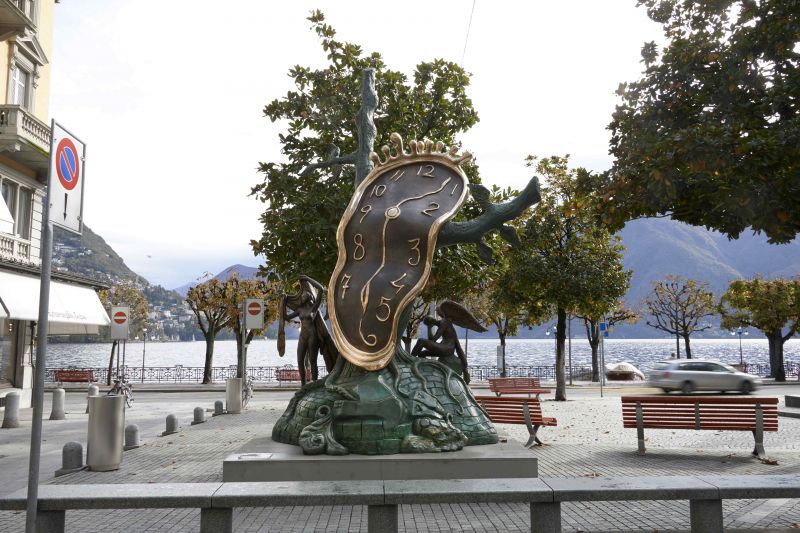Dali
Nobility of Time
Bronze, 490 cm
Chat with us on WhatsApp
About the artwork
The classic Dalinian theme of time takes centre stage in this sculpture. Dalí’s soft watch is draped against a tree whose roots entwine a stone. The watch is stretched, its malleable form seems to take the shape of the tree. The trunk sprouts new roots and leaves grow from the branches, symbolizing new life. In the sculpture, a crown adorns the watch. The terminology “crown of a watch” usually refers to the mechanical device which allows us to wind and set the hands of a clock. Without this important component, a watch won’t wind and cannot keep time. Dalí plays with this notion, since time on a Dalinian watch is timeless, irrelevant and cannot be set. Dalí’s watches have no motion and lose all meaning, the essence of time is lost and melts away. The crown of the watch, in this case can be interpreted as a royal crown, symbolizing the “nobility” of time, indicating time’s mastery over human beings. Time reigns supreme over man, governing our existence in the real world, immutable and uncontrollable by man. By the side of time stand two recurring images: a meditative angel representative of the Spirit, and a female figure covering herself with a shawl.
About the artist
Born on May 11, 1904, in Figueres, Spain, Salvador Dalí’s
eccentric nature and talent for self-promotion made him the most famous
representative of the surrealist movement and one of the most widely recognised
artists in the world. Identified as an artistic prodigy from a tender age, Dalí attended the drawing school at the Colegio de Hermanos Maristas and the
Instituto in Figueres, Spain in 1916. In 1922, he enrolled in the Academia de
San Fernando in Madrid and received recognition during his first solo show
held in Barcelona in 1925. Dalí became internationally known after the third
annual Carnegie International Exhibition in Pittsburgh in 1928 and grew to
immense notoriety and fame. Today, his sculptures and paintings are exhibited
in the most prestigious museums in the world and part of many coveted private
and public collections.
Go to Dali's profile ›


